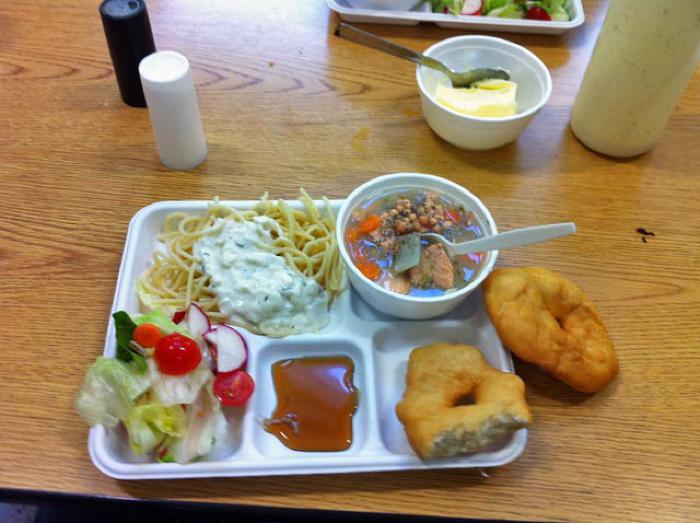Fry Bread — Alatiq (N), Alaciq (S)

Travel almost anywhere in Native America and you will find fried bread. This beloved food is a common addition to meals, a staple at celebrations, and a symbol of intertribal unity. Alutiiq communities are no exception. Fry bread is favorite food that is often found at gatherings, offered with holiday meals, and served to guests. Elders recall dipping fried bread into syrup or canned milk mixed with sugar, sprinkling the bread with sugar, or topping it with homemade berry jam. Today, people often enjoy it with butter and honey.
When did Kodiak’s Native people adopt fry bread? Some think it is a Russian addition, others suggest this food was developed in the American era. In the western United States, Indian women first created fried bread from food commodities issued to reservation families. Here, frying with deer or bear tallow was a traditional method of cooking cakes made from seed meals.
Poor-quality western rations were simply adopted to create a similar food. Perhaps Alutiiq families faced with commercial foods also created fried bread, or perhaps children sent to Native boarding schools learned how to make it from friends.
Whatever the origins of Kodiak’s fry bread, there are differences in the way Alutiiq people make this food. Kodiak chefs typically add yeast and sugar to their dough. In contrast, Native people in the Lower Forty-eight omit the sugar and use baking powder for leavening. The flavor of the bread is also influenced by the handling of the dough, the shape of the bread, the oil used for frying, and the frying time. Thus, although all bread dough is made with essentially the same ingredients, there is an art to making light, fluffy pieces of fried bread, and each chef has their own method for success.
